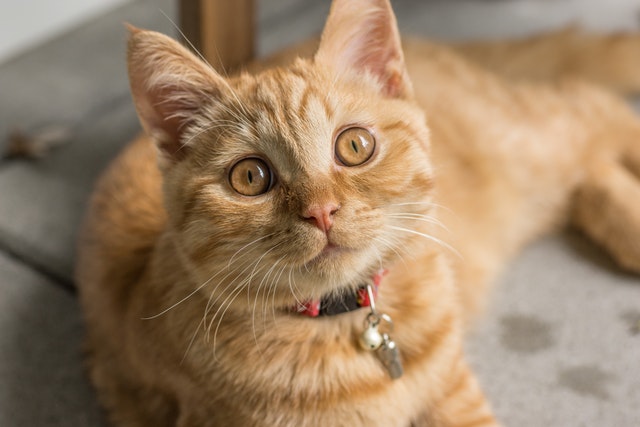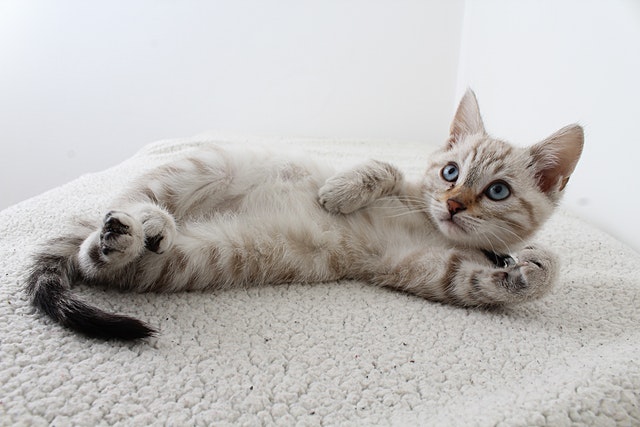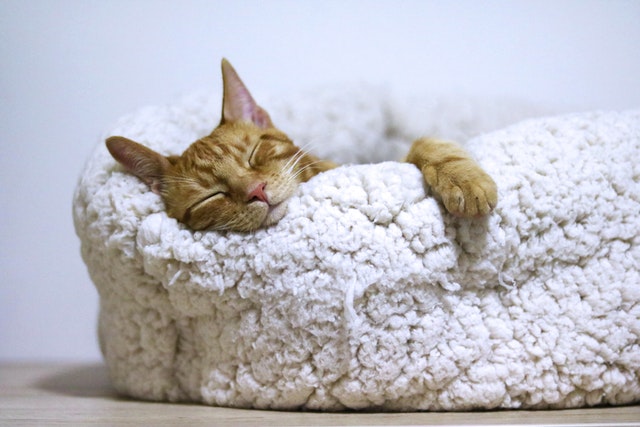Pet Insurance Review > Pet Wellness Guides > Does My Cat Have a UTI? Signs and Treatments for a Urinary Tract Infection - Pet Insurance Review
Does My Cat Have a UTI? Signs and Treatments for a Urinary Tract Infection
Posted: 06/30/2022 | BY: Jenna Bruce | Categories: Cat , Pet care , Vets
Urinary tract infections (UTIs) are not common ailments in cats. In fact, only 1 – 3% of cats who present with symptoms of UTIs actually have a urinary tract infection.
The symptoms of UTIs mimic those of other conditions, and so suspected UTIs must be distinguished from other health problems, such as crystals in the cat’s bladder. Luckily, your vet can run some simple diagnostic tests to be able to make an accurate diagnosis.
Symptoms of Urinary Tract Infections in Cats

Cats with UTIs make frequent trips to the litter box and may also seem restless. Often, cats will be unproductive in the litter box. This means they go in and strain and stand there for some time, but only a small amount of urine, or no urine, is produced. Occasionally their urine may have a tinge of blood in it.
Sometimes a cat may avoid the litterbox altogether and begin peeing in other places. There are two schools of thought as to why this happens.
The first is that the cat now associates the litter box with pain and discomfort, and so they begin using the sink, bathtub, and yes, even that pile of clean laundry, as a place to relieve themselves.
The other school of thought says that cats that pee outside of the litter box are trying to tell their human that something is wrong with them.
Whatever the reality may be, peeing outside of the litter box is a big red flag that something is going on with your cat and they should be brought in to the vet to get checked for a UTI or other possible health issue.
Causes of UTIs in Cats

UTIs in cats are caused by bacterial infections. The bacteria will come from either the gastrointestinal tract or somewhere lower down the urinary/reproductive tract. Older cats, or cats with other medical conditions, are at a greater risk for developing urinary tract problems.
Typically, UTIs in cats are easy to clear with the use of prescription antibiotics. Chronic infections, or those that do not respond well to typical medications, may require more testing to determine why the cat is at such a high risk for ongoing infections.
Diagnosing UTIs in Cats
Your vet will collect a urine sample from your cat and examine it for the presence of bacteria. These samples are collected by a process called cystocentesis, which involves using a fine needle to draw urine directly from the bladder. The process is relatively easy on your cat and necessary to prevent contamination of the urine sample from any bacteria that may be in plastic cups or any other surface the urine may come in contact with.
Once the urine sample is collected, your veterinarian will run what is called a culture-and-sensitivity test. This test will help them identify what strain of bacteria they are dealing with to determine the best antibiotic to prescribe.
Treating a Urinary Tract Infection in Cats

UTIs in cats are typically treated with a course of antibiotics. Your vet may also recommend you feed your cat an all wet food diet for a period of time, as dry foods tend to make the urine more concentrated, which can lead to urinary tract problems.
If your cat is presenting with a lot of discomfort, your vet may also prescribe an anti-inflammatory pain medication. It should also be noted that acute, or sudden, UTIs typically require a relatively short course of antibiotics, while chronic UTIs may take longer to clear up.
Whatever the length of time your cat will need to be on antibiotics, it is important to follow the instructions and finish the entire course, even if it seems like your cat is acting better. Infections tend to recur if antibiotics are stopped too soon.
Preventing UTIs in Cats

With the right treatment plan, a urinary tract infection will usually clear in about 7 – 10 days. However, these infections can recur, so it’s important to take preventative measures to prevent another UTI:
Add More Wet Food
More hydration is going to keep your cat’s urinary tract healthy. If they are on a dry food diet, speak to your vet about switching them to canned food. If they are currently on wet food, try adding a bit more water to the food to add even more hydration.
Ensure Plenty of Clean Water
When we get busy, it’s easy to forget if we gave our pets clean, fresh water that day. It’s very important to get into the habit of cleaning your cat’s bowls and refilling with cool, fresh water.
If your cat doesn’t drink very much, consider buying him or her a water fountain. Cats are attracted to running water and often prefer drinking from a fountain than a bowl. You may also want to keep a faucet on a slow trickle to entice them to drink!
Keep Litter Boxes Clean
We can all make a list of things we’d rather do than clean litter boxes. But it’s important that your cat’s litter box(es) are cleaned each day to support healthy bathroom habits.
Consider a Prescription Diet
There are numerous prescription foods on the market that support urinary tract health. Ask your vet if one of these may benefit your cat.
Give Your Cat the Very Best Care
While we can’t always prevent a UTI from occurring in our cat, we can ensure they get the very best treatment should one arise. But treatment for UTIs can be costly. Between vet visits, diagnostic testing and prescription medications, the bill can get high very quickly.
That’s why we started Pet Insurance Review. We’re pet lovers ourselves who became frustrated with the rising cost of pet healthcare. You shouldn’t have to worry about whether or not you can give your precious fur baby the care they need.
We search the marketplace to find the very best pet health insurance plans so you can know without a doubt you can care for your baby. Did you know some plans can reimburse your for up to 90% of the vet bill?
Don’t let high vet bills stop you from providing the care your cat deserves. Get a free quote today!
References:
- Crystals in the Urine in Cats. Retrieved from: https://www.petmd.com/cat/conditions/urinary/c_ct_crystalluria
- Mitchell, Sandra C., DVM, DABVP. (2021) UTIs in Cats (Urinary Tract Infections in Cats). https://www.petmd.com/cat/conditions/urinary/utis-cats-urinary-tract-infections-cats
- Cat Urinary Tract Problems and Infections. (2021). Retrieved from: https://pets.webmd.com/cats/guide/cat-urinary-tract-problems
- Remedies for Cat Urinary Tract Infection. Retrieved from: https://pets.webmd.com/cats/remedies-cat-urinary-tract-infection#1
Disclaimer
The information contained on this blog is intended for informational and educational purposes only and should not be construed as medical advice. It is not a substitute for professional veterinary care. Always consult with your veterinarian before making any changes to your pet's health care or treatment plan.
The authors of this blog are not veterinarians and do not claim to be experts in pet health. The information provided here is based on our own experiences and research, as well as information from reputable sources. However, we cannot guarantee the accuracy or completeness of this information.
We encourage you to do your own research and consult with your veterinarian before making any decisions about your pet's health.